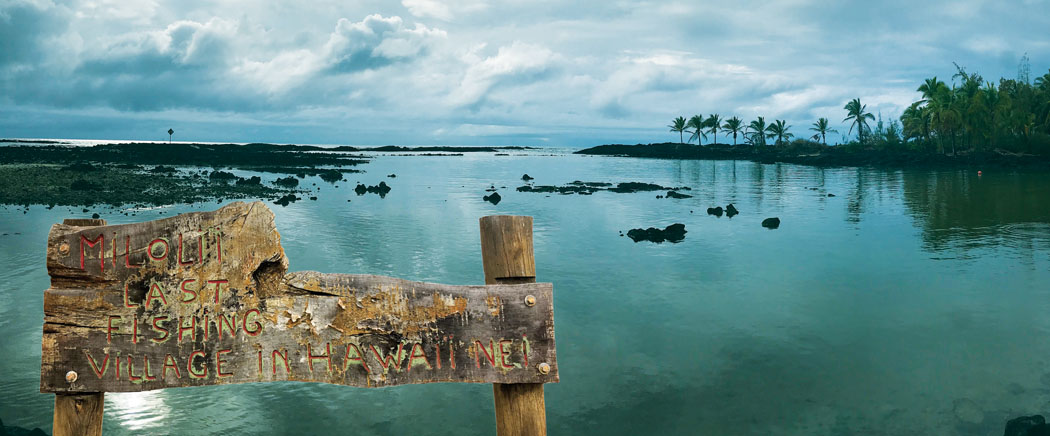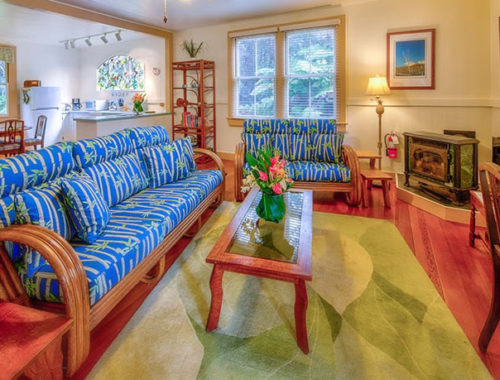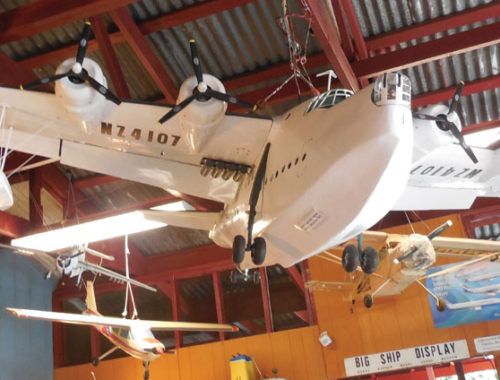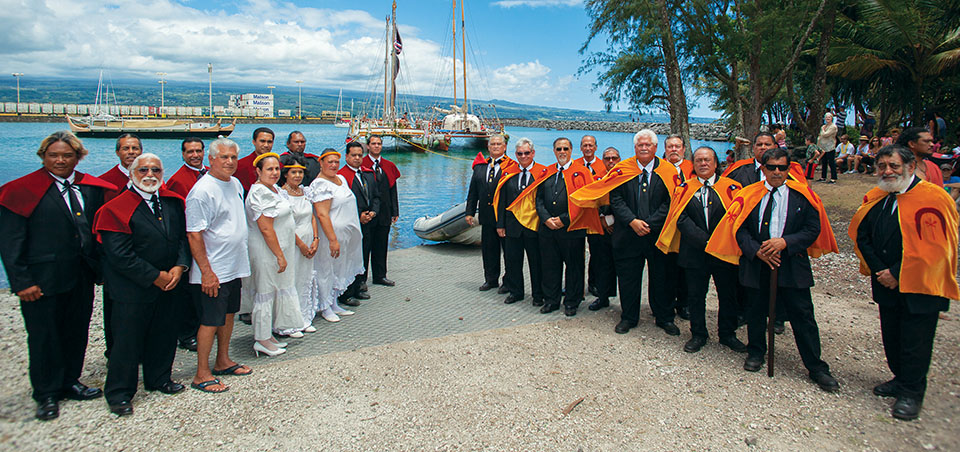
Royal Order of Kamehameha I: Moku O Keawe

By Russell Paio and Peter T. Young
Editor’s Note: In respect for Moku O Kona, this story will not include the diacritics of the modern Hawaiian language, with the exception of the name of the Hawaii Island–East side, Hilo area Moku.
The Order of Kamehameha as it exists today was created on April 11, 1865 by Kamehameha V (Lot). The first Hawaiian Royal Order was established by the King to commemorate his grandfather, Kamehameha the Great.

With the death of his younger brother in 1863 (Alexander Liholiho—Kamehameha IV), Prince Lot Kapuaiwa became Kamehameha V. He sought a new constitution to restore more powers to the king. In 1864, when it appeared that a new constitution could not be agreed upon, he declared that the Constitution of 1852 be replaced by one he had written himself.
Consistent with the prior constitution, Article 35 of the Constitution of 1864 (identified as Article 37 in the prior Constitution of 1852) states, “All Titles of Honor, Orders, and other distinctions, emanate from the King.”
The King’s Decree noted he was “desirous to cultivate and develop among (his) subjects the feelings of Honour and Loyalty to Our Dynasty and its institutions…”
It also expressed his “wish to confer honorary distinctions upon such of Our subjects and foreigners as have rendered, or may hereafter render, to Our dynasty and People important services …”
Privy Council meeting minutes state: “His Majesty stated that it was his intention to make Known to the Privy Council that it is his desire to institute an order of merit. Having read the Article 35 of the Constitution he asked the advice of the members of the P. C. as to the propriety of creating an order, and read a Decree which he had prepared. Members Varigny, Harris and Andrews spoke in favor of the Institution and the following resolution passed unanimously.
“Res 2. Resolved that this Council fully concurring in the views embodied in the preamble of a decree instituting an order of merit, respectfully advises His Majesty to promulgate the proposed decree.”
The King made himself an ex officio Grand Chancellor of the Order of Kamehameha I; he also conferred the Order to a number of people, including Mataio Kekuanaoa and Richard Wyllie (Grand Cross;) CG Hopkins, GM Robertson, EH Allen (Commander), and a number of Knights.
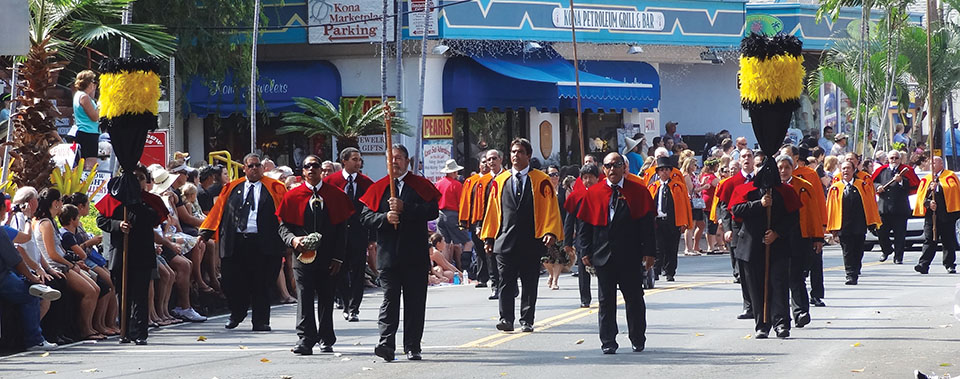
His Decree and subsequent statutes and meeting notes of what appears to be an organizational meeting, held March 16, 1867, note that there were initially three classes and limits on the number of (living) members in each class: Knights Grand Cross (10-members,) Knights Commanders (30-members) and Knights Companions (Knight) (50-members.)
Participants in the 1867 meeting included King Kamehameha V, Mataio Kekuanaoa, Elisha H Allen, E Varigny, CC Harris, John O Dominus, Paul Kanoa, and HP Staley.
The class and membership limitations did not include the King’s right to make appointments to foreigners (Foreign Exchanges) or as complementary to foreign sovereigns or powers.
Prior to admittance, prospective members were required to state the following oath:
“I do hereby solemnly swear to remain faithful to the principles of honor, obedient to the rules of the Order of Kamehameha I and to be a true and faithful Knight of the said Order of which I am this day a member.”
Commissions issued to members of the Order were signed by the King and countersigned by the Chancellor of the Order.
In the duration of the issuance of Order medallions under the Hawaiian monarchs (1865-1886), the Order of Kamehameha was awarded 57 times by King Kamehameha V and 82 times by King Kalakaua.

The insignia, worn on the left breast, consists of a Maltese Cross surmounted by the Hawaiian crown. Rays of gold or silver are found between the arms of the cross. Enameled in blue and white and centered on the cross is a circular shield, the center of which is inscribed and elaborates “K.”
On the periphery of the shield in a blue ban, is the inscription “Kamehameha I;” on the badge’s reverse around the shield is inscribed “E Hookanaka” (To be a man).
In 1893, after the overthrow of Queen Liliuokalani, the Order operated as a secret society until 1903, when under Prince Kuhio Kalanianaole it returned into the public light.
“Credit for the founding of this Order, which dates from May 1903, or a little more than 10 years after the close of the monarchy and a little less than five years after annexation to the United States, belongs to Dr. George H. Huddy, who has served the territory faithfully and well as a representative in the legislature, first from Kauai and then from Hawaii … Prince Jonah Kuhio Kalanianaole, delegate to congress, was the first alii ai moku, or sovereign head of the revived Order” (Star-Bulletin; June 10, 1913).
In 1905, the Order of Kamehameha brought solemnity to the Kamehameha Day holiday by draping a lei on the statue of Kamehameha in front of Aliiolani Hale and standing watch throughout the day (Stillman).
On July 16, 1907, Jonah Kuhio Kalanianaole, George H. Huddy, Nagaran Fernandez, Carlos A. Long, James H. Boyd, George E Smithies, Charles H. Rose, and Abraham Fernandez petitioned for a Charter for the Hawaii Chapter No. 1, Order of Kamehameha.
“… the object for which the same is organized is as follows, 1. To inculcate the cardinal principles of Friendship, Charity and Benevolence; to provide for Sick and Funeral Benefits; to aid the widows and orphans; and to improve the social and moral conditions of its members” (Hawaii Chapter No. 1, Order of Kamehameha; Petition for Charter, July 16, 1907). An announcement in the Hawaiian Star shortly after noted similar language for the Māmalahoa Chapter No. 2.
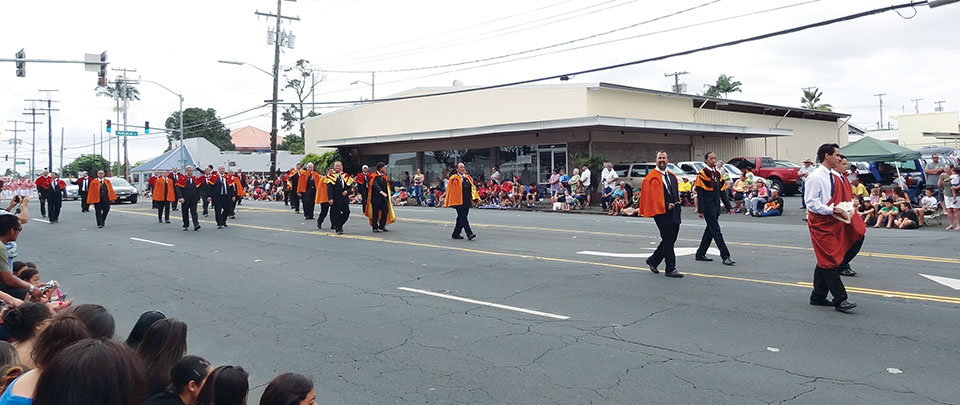
In 1912, members of the Order of Kamehameha invited representatives of other fraternal and civic organizations to participate in a commemorative ceremony to honor Kamehameha I. In 1914, the planning committee opted to organize a parade to process from Aala Park to Iolani Palace as a prelude to the ceremony at the Kamehameha statue. Thus, the inception of the Kamehameha Day parade. (Stillman)
“The Order of Kamehameha ought to endure as long as social order and fraternal amenities prevail in these fair islands. This organization has changed fitful and voluntary homage to the memory of Kamehameha the Great to bounden and regular service on each anniversary of his birth. That the foremost young men of the rare are attending to this patriotic office is one of the best omens of the time.
“It shows that their ideals are those of unity, courage, and progress. As they decorate the statue of Kamehameha, this day of his, with the fragrant wreaths that have long been world-known as the regalia of the warmest human hospitality, let it be believed that they dedicate themselves anew to the social and political betterment of the still potent remnant of their wondrously Interesting race” (Star-Bulletin; June 10, 1913).
The Chapters
Each Chapter has a Senior High Chief who is in charge. He may have 20 or so Chiefs on his individual council. Each Chief has a specific title and duties that he must fulfill and follow. The Chapter also includes other members who are regular members of the Moku and they assist and contribute where necessary.
The “Alii Chapter” encompasses all the individual chapters. Members of the Alii Chapter include specific members of the individual chapters to serve in certain positions. The Senior High Chief in charge may have 50-60 Chiefs on his staff. Each chief has a specific title and duties that he must fulfill and follow on a different level. A member may be asked to serve on both levels, in the local individual Chapter, and on the Alii Chapter or State level, based on skill, intelligence, and commitment to the organization.
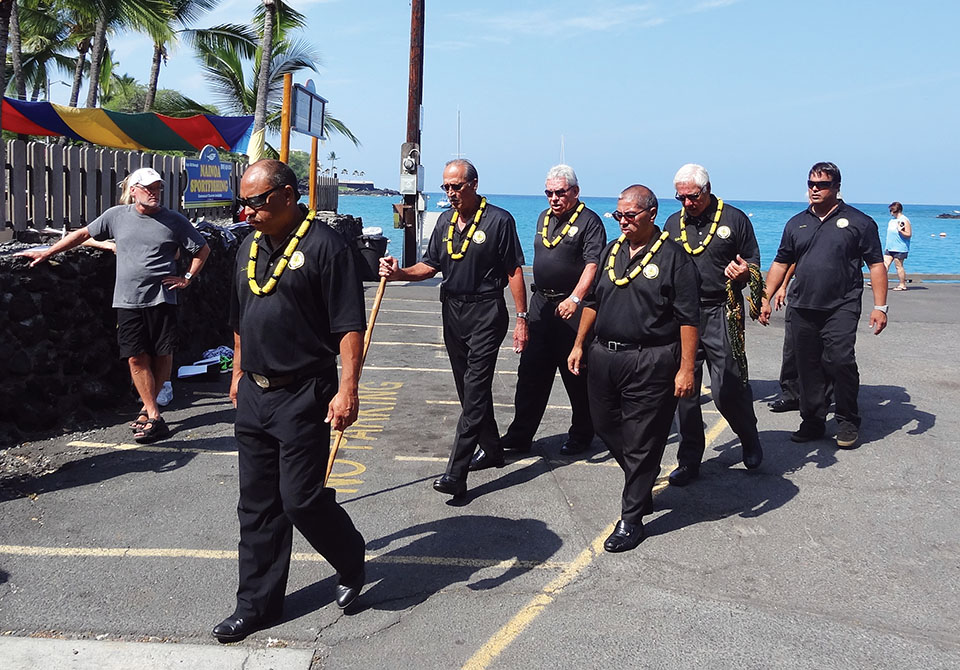
The chapters around the state are numbered as to the date they were formed.
- 1903 Moku O Hawaii, Oahu Downtown area
- 1907 Moku O Māmalahoa, Hawaii Island–East side, Hilo area
- 1918 Moku O Kaumualii, Kauai
- 1922 Moku O Kahekili, Maui
- 1928 Moku O Kalanianaole, Molokai (presently inactive)
- 1962 Moku O Kuhio, Oahu, Kaneohe area
- 1994 Moku O Kona, Hawaii Island
- 2007 Moku O Kapuaiwa on Oahu, Kapolei area
- 2011 Moku O Kohala, Hawaii Island
Who are the Members?
The foundation of the organization relies on the basic principles of the Brotherhood of Man. The Order strives to teach a member the duty he owes to Akua, his ancestors, his neighbor, and himself.
To become a member one must be a kane (male) with Hawaiian descent who desires to join. No one is forced to be a member. He is loyal to one’s country and cheerfully renders obedience to every lawful authority.
The members are taught the practice of virtue with the use of extensive symbolism—kaona or hidden meanings.
There are three types of membership:
- Regular membership—kane must have Hawaiian ancestry
- Honorary membership—kane can be of any ancestry
- Na Wahine Hui O Kamehameha I—the women who are married to a member
One well-known Honorary Alii Kahuna Laau Lapaau is Dr. Earl Bakken.
Code of Conduct
This is shared with an intended applicant who desires to be a member of the Order. If he chooses to live up to these requirements, then he can apply for membership. The Code of Conduct requires adherence to the behavior and cultural respect of nine categories of conduct and its corresponding Hawaiian values, attitudes, and concepts:
- Kamehameha I (The Standard)
Kamehameha, the Standard of Leadership. The ihe (spear) reminds us that Kamehameha with his chiefs and warriors united these islands; we are expected to guard well the welfare of our Order and to protect it against all enemies who seek to attack it with untruths. Keep always that high standard of integrity and honor as a Hawaiian subject and the duty you owe your country and Noble Order. Be a man in the highest sense of the word and let your conduct be a shining light among men.
E HOOKANAKA – “Be a Man” - Alakai (Leadership)
Cultivates the cardinal principles of friendship, charity, and benevolence; infuse the spirit of patriotism, loyalty, helpfulness, and kindness among its members, advance the interest of members in every rightful cause, and to encourage and develop leadership. - Kalaiaina (Political)
The mission of the Royal Order of Kamehameha I, is to reaffirm the existence of the Kingdom of Hawaii and advocate for its full entitlements of Self Governance over its People, Land, Ocean, and other resources. - Hoolono (Obedient)
Promise to aid in advancing the benefits of the Royal Order of Kamehameha I, and obey all orders given to you by the High Chiefs. - Wahi noho like o ka poe (Community)
Uplift the Hawaiian people, Lokahi = Unity, as Hawaiians realizing the necessity of uniting our people so that ALOHA for one another may be fostered and cherished. - Na ike a me na hana (Cultural)
Preserving and perpetuating the culture of our forefathers, uplift the Hawaiian people. -
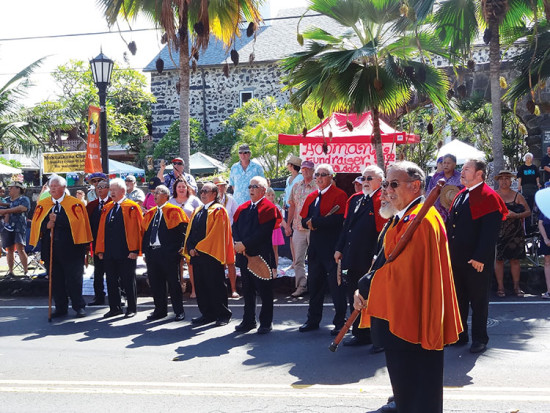
In front of Hulihee Palace, King Kamehameha Day Parade Hoomana (Spiritual)
All life forms seen and unseen are sacred. Therefore all things require respect for their Mana (spiritual life energy). Maintain an attitude of respect and humility. - Makahiki (Sports and Religious Festivities)
Caring for life, encouraging a brother to participate in the Order’s activities to the fullest extent possible. The ancient customs and practices are honored. - Hooponopono (Make Right)
Healing to make right, to aid a brother in distress, to relieve his necessities in so far as you are able to. Hoihi aku, Hoihi mai, sharing mutual respect for each other with an attitude of haahaa, being humble.
What the Royal Order is not
The Royal Order of Kamehameha is not a benefit society. No one should attempt to join the organization with the hope or expectation that he will derive any financial benefit out of it—this is pure volunteerism. Nor should one join and expect the hope of personal gain or advancement within the organization.
No member is forced to go up against his personal moral, civil, or religious duties.
More importantly, the Order is not to be used for mercenary or other unworthy motives, such as any material or moneymaking reasons.
What is Kapu
For protection purposes each person’s level of each chief is never revealed outside of the Royal Order.
When the Royal Order is in full dress at any ceremony—dressed in black and wearing yellow and red capes in various designs—they are channeling the Alii and should not be touched or conversed with. Which is why, if anyone comes up to give them a hug while they are wearing their cape, they will politely redirect the hands of the greeter. Wahine (women) are not allowed to touch the capes, even when hanging in a member’s closet.
The various colors and designs of the capes mean different things and are not revealed outside the Royal Order.
“People ask us if we are a secret society, and I say no, we are a society with secrets,” says Nainoa Perry.
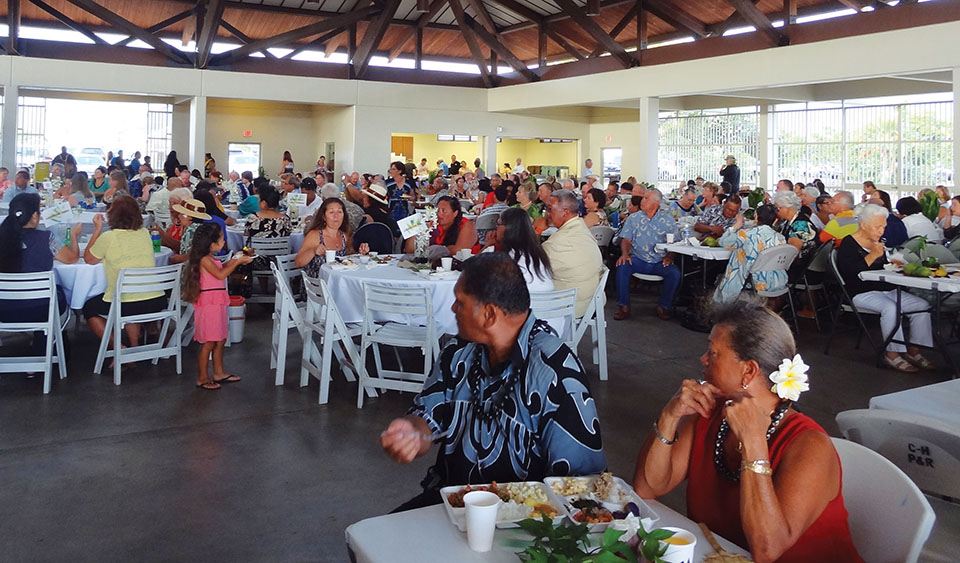
The purpose of the Royal Order today
The organization preserves and perpetuates the ancient culture, customs, and traditions of Hawaii while uplifting the Hawaiian people.
The members unite and cultivate the cardinal principles of friendship, charity, and benevolence. They provide aid to widows and orphans. And improve the social and moral conditions of its members by infusing the spirit of patriotism, loyalty, helpfulness, and kindness.
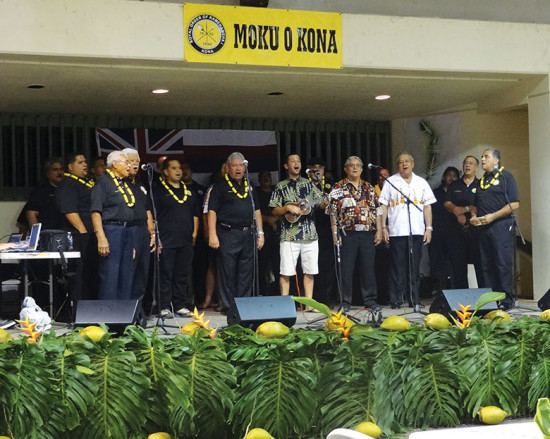
The Order encourages and develops leadership and advances the interest of its members in every rightful cause. It provides scholarship assistance to graduating West Hawaii high school seniors to help them pursue their goals of higher education at a two or four year college.
Now, are they doing all of this? It depends who you ask, as a lot of what the Order does is done behind the scenes and not out in public view.
It doesn’t matter what the public thinks of the Order, as long as its members know who they are and what they do. The organization was not created to be a popular men’s club. Yes, they are a fraternal group, however with a specific purpose.
“As with all other organizations and groups in existence today, their current leadership will always try to improve or change the mission and goals of the organization entity to fit the modern world. We try to stay to the original purpose as much as possible, yet always leave room to adapt, modify, amend, and refine without losing the focus on our purpose,” says Russell Paio.
Annual Fundraiser
The third annual luau is August 9, 2014 at the Makaeo pavilion at Old Airport State Park in Kailua Kona. The cost is $30, with the proceeds going towards their scholarship program.
This is the second year the Royal Order Moku O Kona will be giving out scholarships and hopefully it will continue annually with the assistance of the local community and area kupuna. ❖
To order Luau tickets: 808.747.6165
Contact writer Peter T. Young: ToTakeResponsibility.blogspot.com
Contact writer Russell Paio: RoyalOrderOfKamehameha.org
Photos by Renée Robinson
